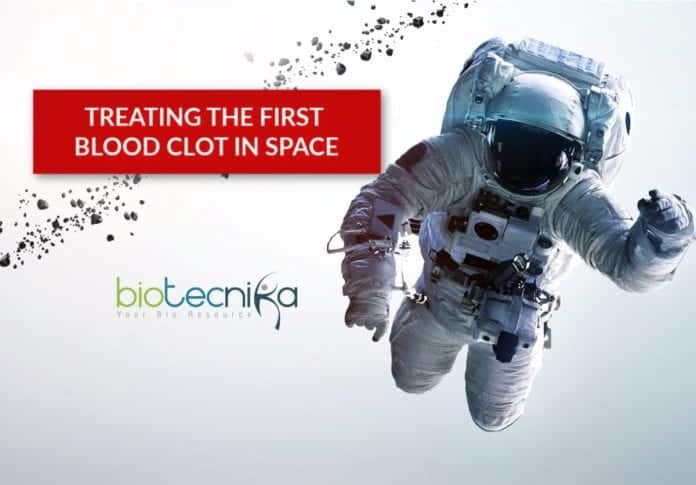--Must See--
The First Blood Clot In Space Treated by Radiologist on Ground.
It is not easy for a doctor to make a house call when the patient is an astronaut 250 miles up from the earth’s surface on the International Space Station.
NASA researchers had to act quickly to treat when one of their astronauts was unexpectedly suspected with a blood clot during a long-duration stay on the space station last year.
Researchers were studying the effect of space on the internal jugular vein of 11 astronauts when they detected the blood clot. The blood and tissue fluids of astronauts shift towards the head in zero gravity.
The identities of the astronauts are not revealed in the study in which nine men and two women astronauts of around 46 age were involved. New England Journal of Medicine published the new assessment of the blood clot on Thursday.
Among the 11 astronauts, stagnant or reverse flow affected six, one had a blood clot and another experienced a potential partial blood clot. None of the astronauts exhibited any symptoms. Without the study, the findings wouldn’t have been evident.
An ultrasound of one of the astronauts during the second month of six months’ mission
revealed a blood clot. The scientists and radiologists on the ground confirmed the findings through a second ultrasound in real-time. The results of the ultrasound were interpreted by the radiologists immediately.
This risk has not been detected in an astronaut before, so scientists considered the possibility of blood clotting and the possibility of a blood vessel being blocked in the absence of gravity. They also evaluated how the treatment would affect the astronaut in this environment.
Dr. Stephen Moll was the only outside physician NASA approached to help the astronaut in real-time. He is a professor at the University of North Carolina at Chapel Hill’s School of Medicine. When NASA approached Dr. Moll, his first reaction was if he could visit the International Space Station to treat the astronaut himself. But he began with the treatment process from the Chapel Hill as NASA informed that they couldn’t get him up to space so quickly. Dr. Moll is an expert in blood clots and a member of UNC’s Blood Research Center.
The treatment for deep vein thrombosis usually starts with the use of blood thinners for three months so that the clot doesn’t get bigger and the harms it could cause if moved to different parts of the body such as lungs can be reduced. But there are some risks behind taking blood thinners. It could cause internal bleeding and emergency medical attention could be needed in that case. As there are no emergency rooms in space, they had to weigh their options carefully. Moll spoke with the astronaut in space just like his other patients.
The astronaut was instructed to use the injectable blood thinner from the 20 vials with 300 milligrams each available at the space station on a daily basis until the anticoagulant drug could be sent up to the space station on a resupply mission. Injections are challenging in space as syringes are limited in space and the zero gravity has an effect on the liquids while drawn from the vials. For 33 days he took a strong dose of enoxaparin, an injectable blood thinner to reduce the risk of the blood clot. After 33 days, the dose was lowered as he waited for the drug apixaban.
But the stagnant blood flow and the first blood clot in space treated have made NASA aware of this potential risk, especially when considering future long-duration missions to the moon or Mars.
Further research is required to understand the blood clot formation in zero gravity and possible countermeasures.






























